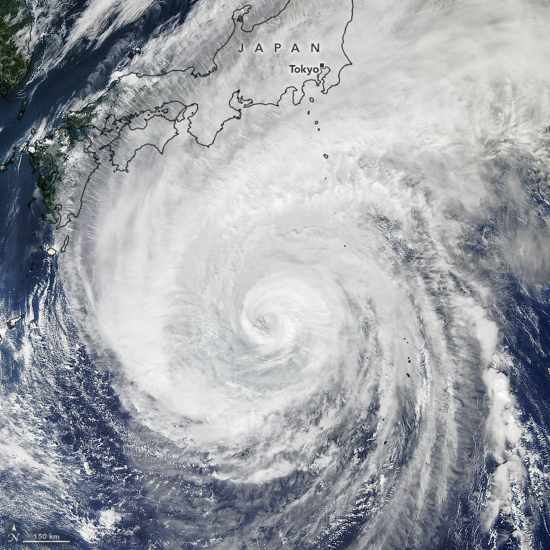A handful of insurance-linked securities (ILS) funds invested into collateralised reinsurance positions have experienced some further adverse development related to 2019’s Japanese typhoon Hagibis in June, we understand.
 The adverse development has been sufficient to drive a few ILS fund positions negative for the month of June 2020, we’ve learned, as these positions were significant enough to change ILS fund’s performance to in the red for the period.
The adverse development has been sufficient to drive a few ILS fund positions negative for the month of June 2020, we’ve learned, as these positions were significant enough to change ILS fund’s performance to in the red for the period.
Adverse loss development and loss adjustments have become a feature of the ILS market over the last few years, with hurricane Irma providing the first significant example for how losses can develop significantly over months, but also Japanese typhoon Jebi from 2018 doing the same.
Now typhoon Hagibis is also becoming another major catastrophe loss that is creeping higher, for some cedents, resulting in rising losses being reported to reinsurance counterparties, including some ILS funds.
A handful of ILS funds were impacted in June 2020 by rising reported losses from cedents exposed to typhoon Hagibis, we’re told, resulting in them reporting negative returns for the month.
The last time this happened in any meaningful way was back in November 2019, when a few ILS funds had to increase their loss provisions for typhoon Hagibis.
Hagibis is another typhoon where opinions in the market, on the eventual industry loss to insurance and reinsurance firms, differed significantly at the time of the event, with estimates ranging from $8 billion to as high as $16 billion.
It appeared to settle somewhere around the $8 billion to $10 billion mark, but clearly creep is continuing as loss notifications are increasing the toll for reinsurers.
It still doesn’t look like typhoon Hagibis is following the same path as Jebi, which saw a near doubling of its industry loss estimate over time. But it’s clear from the latest reports that at this time the creep or adverse development associated with the 2019 typhoon isn’t over.
While we’re on the topic of adverse loss development, Lancashire Holdings gave an insight into how a perceived short-tail catastrophe peril can turn into a long-tail liability.
The company today reported adverse development on a property loss from the 2010 New Zealand earthquakes, showing that catastrophe risk losses can keep creeping even a decade after the event.
 View all of our Artemis Live video interviews and subscribe to our podcast.
View all of our Artemis Live video interviews and subscribe to our podcast.
All of our Artemis Live insurance-linked securities (ILS), catastrophe bonds and reinsurance video content and video interviews can be accessed online.
Our Artemis Live podcast can be subscribed to using the typical podcast services providers, including Apple, Google, Spotify and more.































